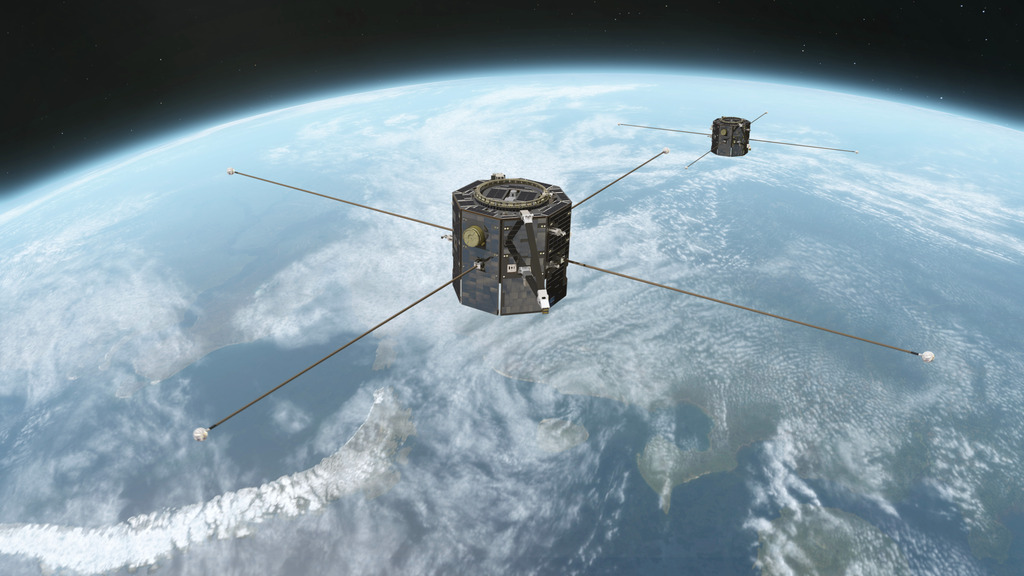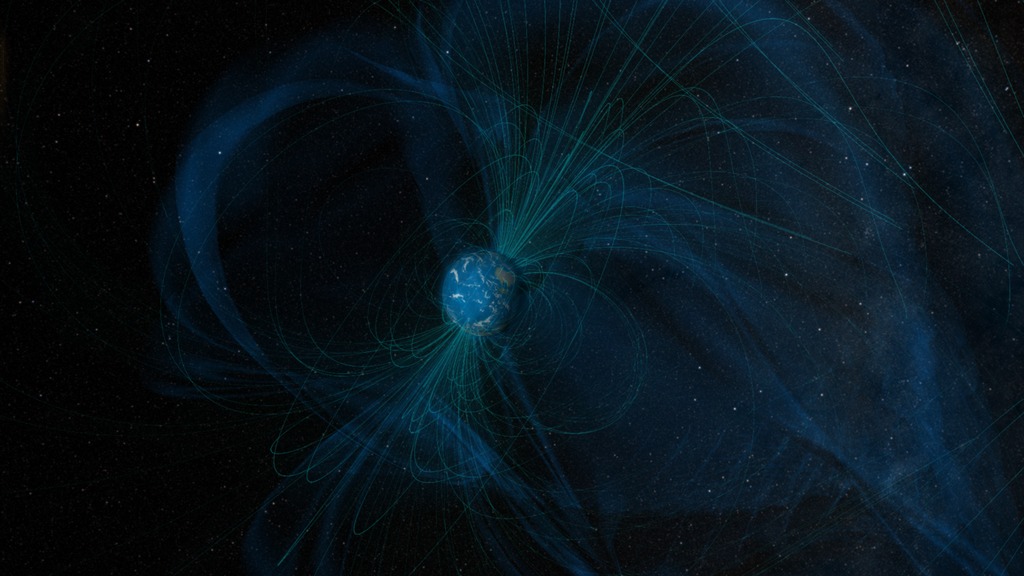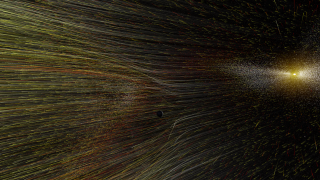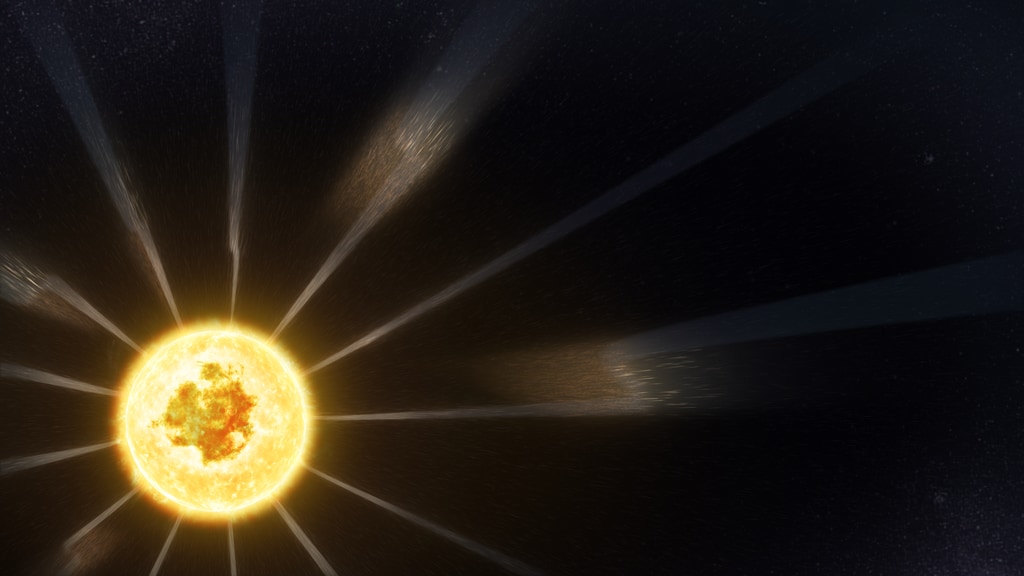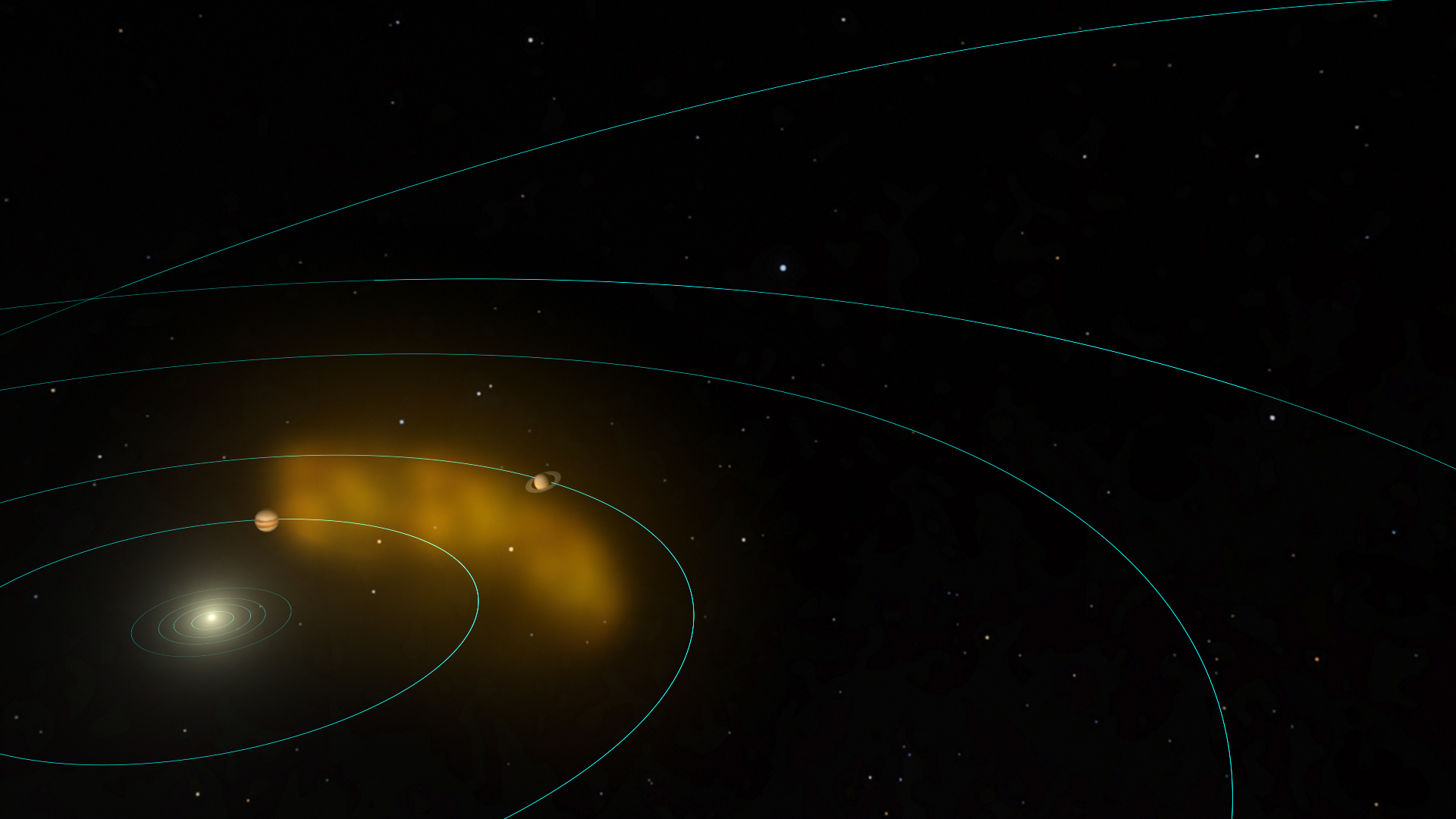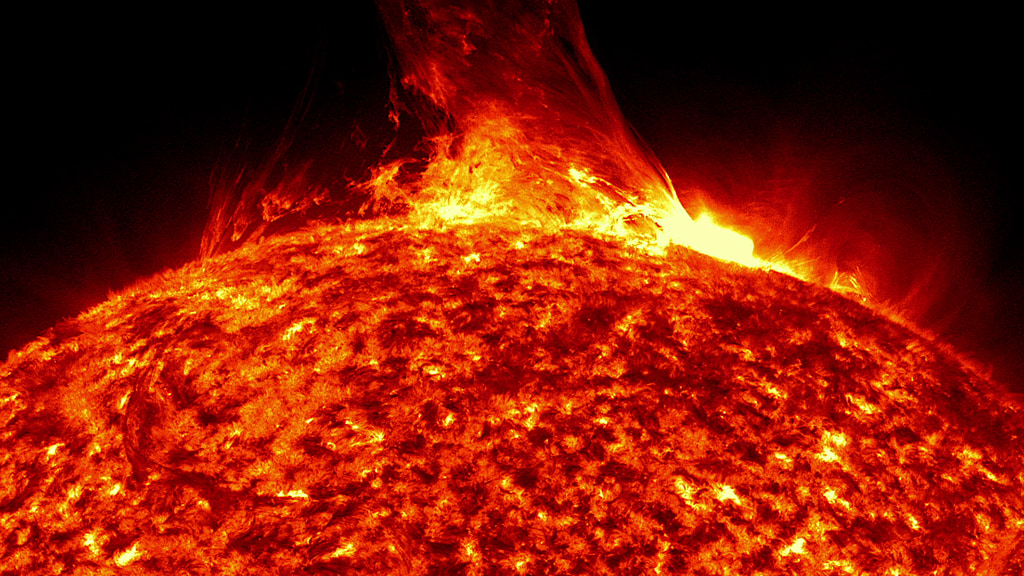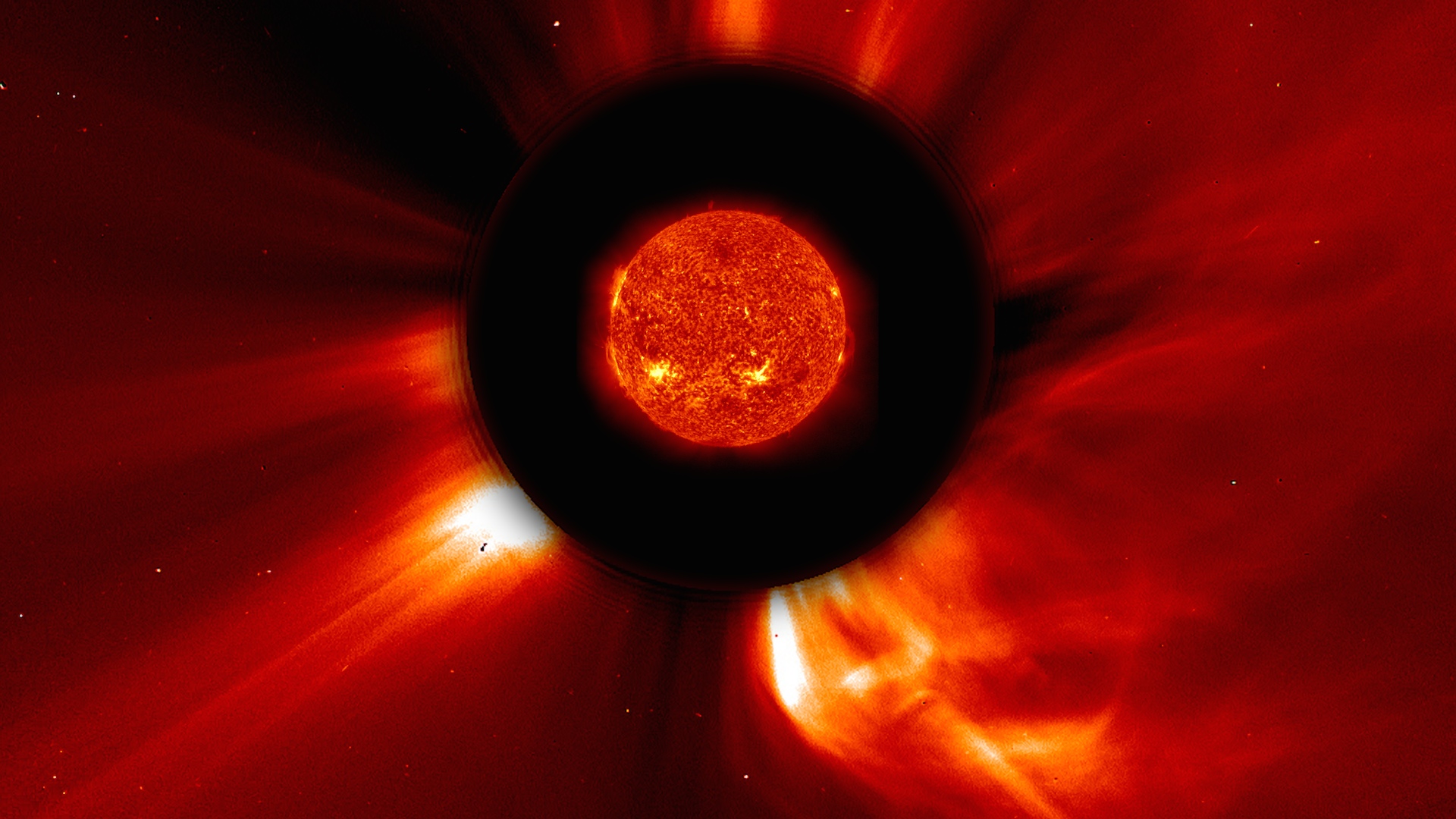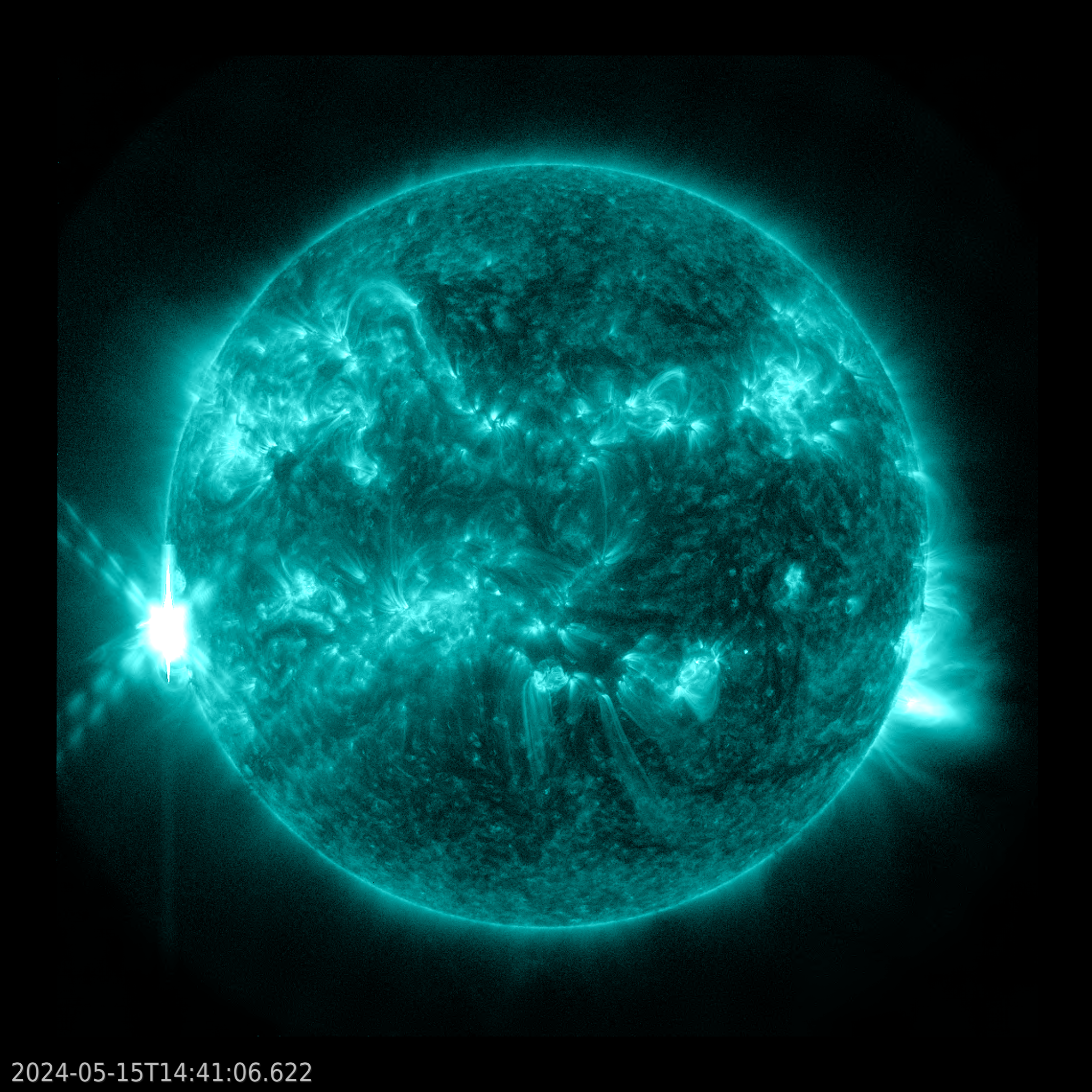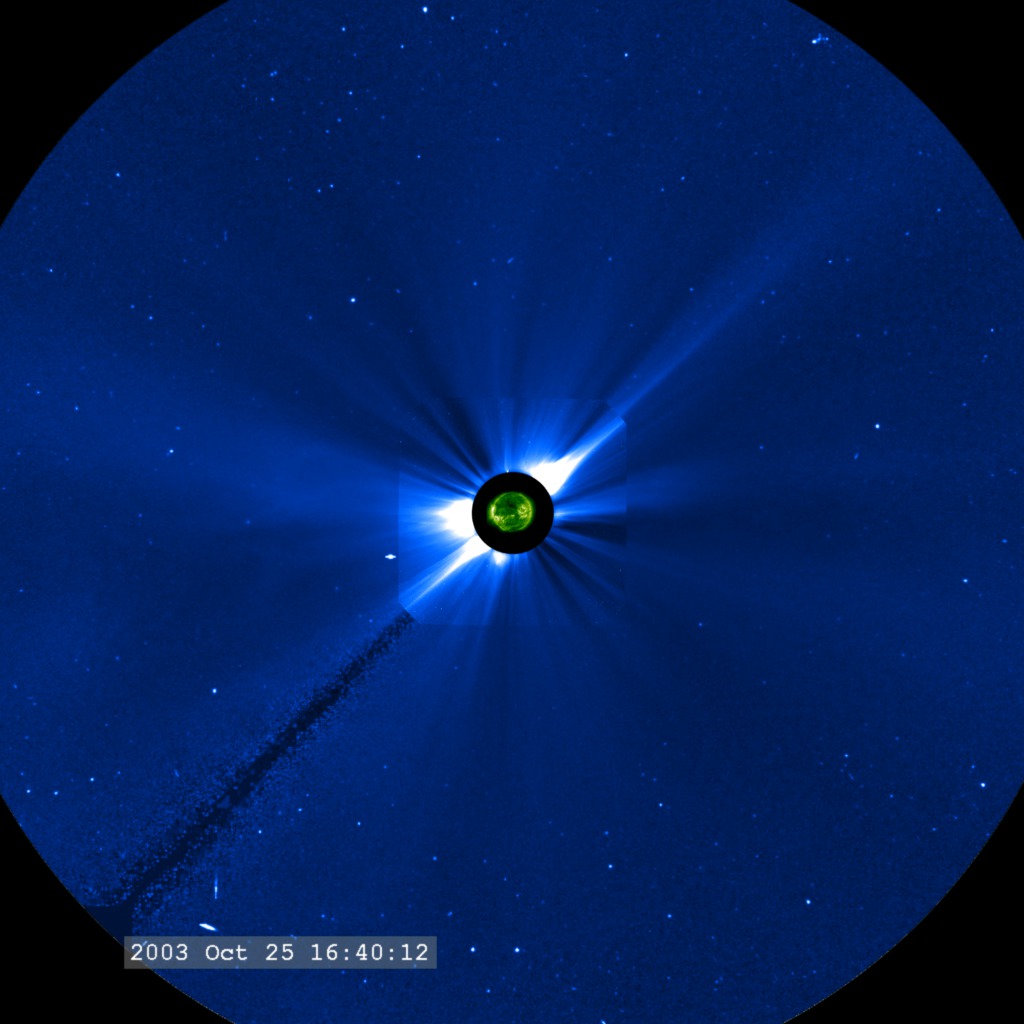TRACERS
Overview
NASA’s Tandem Reconnection and Cusp Electrodynamics Reconnaissance Satellites, or TRACERS mission, consists of two satellites that will help scientists understand an explosive process called magnetic reconnection and its effects in Earth’s atmosphere. Magnetic reconnection occurs when magnetic fields and particles from the Sun interact with Earth’s magnetic field. By understanding this process, scientists will be able to better understand and prepare for impacts of solar activity on Earth, such as auroras and disruptions to telecommunications.
The TRACERS mission is led by David Miles at the University of Iowa and managed by the Southwest Research Institute in San Antonio. NASA’s Heliophysics Explorers Program Office at the agency’s Goddard Space Flight Center in Greenbelt, Maryland, provides mission oversight to the project for the agency’s Heliophysics Division at NASA Headquarters in Washington.
Learn more about the mission: https://science.nasa.gov/mission/tracers/
TRACERS Produced Content
NASA’s TRACERS Studies Magnetic Explosions Above Earth
Go to this pageNASA's TRACERS mission, or the Tandem Reconnection and Cusp Electrodynamics Reconnaissance Satellites, will fly in low Earth orbit through the polar cusps, funnel-shaped holes in the magnetic field, to study magnetic reconnection and its effects in Earth's atmosphere. Magnetic reconnection is a mysterious process that happens when the solar wind, made of electrically charged particles and magnetic fields from the Sun, collides with Earth's magnetic shield, causing magnetic field lines to violently snap and explosively fling away particles at high speeds. This process has huge impacts on Earth, from causing breathtaking auroras to disrupting communications and power grids on Earth. TRACERS is launching no earlier than summer 2025 aboard a SpaceX Falcon 9 rocket from Space Launch Complex 4 East at Vandenberg Space Force Base in California.Find out more about the TRACERS mission and how it will help us better understand the ways space weather affects us on Earth: https://science.nasa.gov/mission/tracers/ ||
TRACERS Spacecraft Beauty Passes
Go to this pageThe TRACERS, or the Tandem Reconnection and Cusp Electrodynamics Reconnaissance Satellites, mission will help scientists understand an explosive process called magnetic reconnection and its effects in Earth’s atmosphere. Magnetic reconnection occurs when magnetic fields and particles from the Sun interact with Earth’s magnetic field. By understanding this process, scientists will be able to better understand and prepare for impacts of solar activity on Earth, such as auroras and disruptions to telecommunications.Learn more about the mission: https://science.nasa.gov/mission/tracers/ ||
TRACERS Science Animations
Go to this pageThe TRACERS, or the Tandem Reconnection and Cusp Electrodynamics Reconnaissance Satellites, mission will help scientists understand an explosive process called magnetic reconnection and its effects in Earth’s atmosphere. Magnetic reconnection occurs when magnetic fields and particles from the Sun interact with Earth’s magnetic field. By understanding this process, scientists will be able to better understand and prepare for impacts of solar activity on Earth, such as auroras and disruptions to telecommunications.Learn more about the mission: https://science.nasa.gov/mission/tracers/ ||
TRACERS through Earth's Polar Cusps
Go to this pageVisualization of the orbit of the twin TRACERS (Tandem Reconnection and Cusp Electrodynamics Reconnaissance Satellites) satellites that will explore the process of magnetic reconnection in Earth's polar regions and its effects on our atmosphere.
TRACERS B-Roll and Photos
TRACERS Instrument Development & Testing at the University of Iowa
Go to this pageNASA’s Tandem Reconnection and Cusp Electrodynamics Reconnaissance Satellites, or TRACERS, is embarking on its integration and testing campaign, during which all of the instruments and components will be added to the spacecraft structure, tested to ensure they will survive the harsh environments of launch and space, and made ready to execute its mission. The TRACERS mission will help scientists understand an explosive process called magnetic reconnection and its effects in Earth’s atmosphere. Magnetic reconnection occurs when magnetic fields and particles from the Sun interact with Earth’s magnetic field. By understanding this process, scientists will be able to better understand and prepare for impacts of solar activity on Earth, such as auroras and disruptions to telecommunications.Below are clips of TRACERS’ instrument design, build, and testing at the University of Iowa in Iowa City, Iowa.Learn more about the mission: https://science.nasa.gov/mission/tracers/ ||
TRACERS Testing & Integration at Millennium Space Systems
Go to this pageNASA’s Tandem Reconnection and Cusp Electrodynamics Reconnaissance Satellites, or TRACERS, is embarking on its integration and testing campaign, during which all of the instruments and components will be added to the spacecraft structure, tested to ensure they will survive the harsh environments of launch and space, and made ready to execute its mission. The TRACERS mission will help scientists understand an explosive process called magnetic reconnection and its effects in Earth’s atmosphere. Magnetic reconnection occurs when magnetic fields and particles from the Sun interact with Earth’s magnetic field. By understanding this process, scientists will be able to better understand and prepare for impacts of solar activity on Earth, such as auroras and disruptions to telecommunications.Below are clips of TRACERS’ testing and integration at the Millennium Space Systems Small Satellite Factory in El Segundo, California. Learn more about the mission: https://science.nasa.gov/mission/tracers/ ||
TRACERS Thermal Vacuum Testing at Millennium Space Systems
Go to this pageNASA’s Tandem Reconnection and Cusp Electrodynamics Reconnaissance Satellites, or TRACERS, is embarking on its integration and testing campaign, during which all of the instruments and components will be added to the spacecraft structure, tested to ensure they will survive the harsh environments of launch and space, and made ready to execute its mission. The TRACERS mission will help scientists understand an explosive process called magnetic reconnection and its effects in Earth’s atmosphere. Magnetic reconnection occurs when magnetic fields and particles from the Sun interact with Earth’s magnetic field. By understanding this process, scientists will be able to better understand and prepare for impacts of solar activity on Earth, such as auroras and disruptions to telecommunications.Below are clips of Millennium Space Systems’ team members conducting Thermal Vacuum (TVAC) testing at the Boeing Space Systems Laboratory in El Segundo, California.Learn more about the mission: https://science.nasa.gov/mission/tracers/ ||
NASA’s TRACERS Mission Launches to Study Earth’s Magnetic Shield
Go to this pageNASA’s newest mission, TRACERS, soon will begin studying how Earth’s magnetic shield protects our planet from the effects of space weather. Short for Tandem Reconnection and Cusp Electrodynamics Reconnaissance Satellites, the twin TRACERS spacecraft lifted off at 11:13 a.m. PDT (2:13 p.m. EDT) Wednesday, July 23, 2025, aboard a SpaceX Falcon 9 rocket from Space Launch Complex 4 East at Vandenberg Space Force Base in California.Learn more about the mission: https://science.nasa.gov/mission/tracers/ ||
Dayside Magnetic Reconnection
Space Weather
Go to this pageThis movie takes us on a space weather journey from the center of the sun to solar eruptions in the sun's atmosphere all the way to the effects of that activity near Earth. The view starts in the core of the sun where atoms fuse together to create light and energy. Next we travel toward the sun's surface, watching loops of magnetic fields rise up to break through the sun's atmosphere, the corona. In the corona is where we witness giant bursts of radiation and energy known as solar flares, as well as gigantic eruptions of solar material called coronal mass ejections or CMEs. The movie follows one of these CME's toward Earth where it impacts and compresses Earth's own protective magnetic bubble, the magnetosphere. As energy and particles from the sun funnel along magnetic field lines near Earth, they ultimately produce aurora at Earth's poles. ||
MMS front side reconnection
Go to this pageThis animation show the MMS spacecraft transiting through a reconnection event on the front side of Earth. || MMS frontside reconnection animation || recon_59_94_264_print.jpg (1024x576) [125.4 KB] || recon_30fps_422.webm (1920x1080) [1.7 MB] || recon_30fps_422.mov (1920x1080) [251.4 MB] || recon_59_94_422.mov (1920x1080) [501.3 MB] || recon_59_94_264.mov (1920x1080) [585.0 MB] || mms-front-side-reconnection-animation.hwshow [289 bytes] ||
Solar Wind Interacting with Earth's Magnetic Field
Go to this pageA conceptual animation showing solar wind interacting with Earth's magnetic field and causing atmospheric loss at the polar cusps. || YOUTUBE_1080_13506_Atmospheric_Escape_youtube_1080.00001_print.jpg (1024x576) [77.5 KB] || YOUTUBE_1080_13506_Atmospheric_Escape_youtube_1080.00001_searchweb.png (320x180) [74.4 KB] || YOUTUBE_1080_13506_Atmospheric_Escape_youtube_1080.00001_web.png (320x180) [74.4 KB] || YOUTUBE_1080_13506_Atmospheric_Escape_youtube_1080.00001_thm.png (80x40) [6.3 KB] || YOUTUBE_1080_13506_Atmospheric_Escape_youtube_1080.mp4 (1920x1080) [43.1 MB] || FACEBOOK_720_13506_Atmospheric_Escape_facebook_720.mp4 (1280x720) [32.8 MB] || TWITTER_720_13506_Atmospheric_Escape_twitter_720.mp4 (1280x720) [5.7 MB] || FACEBOOK_720_13506_Atmospheric_Escape_facebook_720.webm (1280x720) [3.0 MB] || PRORES_B-ROLL_13506_Atmospheric_Escape_prores_b-roll.mov (1280x720) [227.8 MB] || YOUTUBE_4K_13506_Atmospheric_Escape_youtube_4k.mp4 (3840x2160) [187.6 MB] || 13506_Atmospheric_Escape_Prores.mov (3840x2160) [2.4 GB] ||
Solar Activity
- Visualization
- Animation
- Section
- Produced Video
- Produced Video
- Produced Video
- Produced Video
- Visualization
![Produced VideoWatch this video on the NASA Goddard YouTube channel.Complete transcript available.Music Credit: "Praxis I,” “Three Voices,” and “Die Vogel” by Alexis Francois Georges Delong [SACEM], “Anticipation” by Nicholas Smith [PRS], “Ocean Wisdom” by Hugo Dubery and Philippe Galtier [SACEM], and “Call from the Sea” by MACARON [SACEM] from Universal Production MusicAdditional Video and Animations: University of Iowa, Southwest Research Institute, Millennium Space Systems, Andøya Space / Trond AbrahamsenSound Effects: Pixabay](/vis/a010000/a014800/a014862/14862_TRACERSoverview_Thumbnail.jpg)
